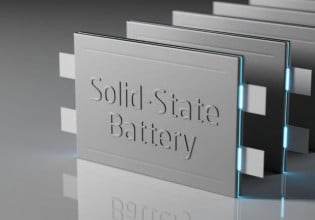University Researchers Develop a Graphene-Based Solution for High-Density Batteries
Researchers from the King Abdullah University of Science and Technology developed a hierarchically porous graphene material for high-density lithium-sulfur battery development.
This year, researchers from the King Abdullah University of Science and Technology (KAUST) published research concerning a solution for a problem known to lithium-sulfur (Li-S) batteries. The researchers developed and implemented the use of a layer of hierarchically three-dimensional porous graphene to suppress polysulfide shuttling.
The problem of polysulfide shuttling has long been standing in the way of creating high-density Li-S batteries for use in applications such as electric vehicles (EVs). The research was carried out by the Ph.D. student and first author, Eman Alhajji, along with her colleagues at KAUST. The results of the research were published in the journal ACS Applied Materials & Interfaces.
Image used courtesy of KAUST
The Problem
Polysulfide shuttling involves the dissolution of intermediate polysulfide species into a liquid-based electrolyte. The term “shuttle effect” is used to describe the movement of the polysulfide species between the anode and cathode of a battery. Polysulfide shuffling is known to result in rapid capacity fading and poor Coulombic efficiency of the cells. Poor cycling stability and severe anode corrosion can lead to reduced battery life. The rechargeability of Li-S batteries can also become impaired. Until now, the methods available for solving the polysulfide shuttling problem have not been suitable for commercial use.
KAUST’s Solution
To combat the shuttling effect, the KAUST researchers used a scalable method to create freestanding laser-scribed graphene (LSG) interlayer. The layer is hierarchically porous in three dimensions with pores being a range of different sizes. Laser scribing is a micromachining process that has been used for the large-scale production of semiconductor wafers, blue LED fabrication, and photovoltaic cells. By placing the graphene interlayer in between the anode and the cathode of the Li-S battery, the KAUST team was able to effectively suppress the polysulfide shuttling.
An LSG interlayer was found to effectively suppress polysulfide shuttling. Image used courtesy of KAUST
In a research highlight from last June, Alhajji said, “Making this freestanding interlayer just a few micrometers thick was a challenge. Alhajji added, “It was fun to roll it like playdough, but then I had to handle it in a very gentle manner, especially during battery assembly.”
Following the creation of the interlayer, the researchers added nano-sized carbon particles which fill up the pores and form the final product.
Li-S batteries have the potential to be a good next-generation energy storage alternative because of their higher theoretical energy storage capacity. Elemental sulfur is also non-toxic to the environment and can be found commonly in nature as sulfides. Sulfur is also a waste product of the petrochemical industry, which means that it could be recycled for use in batteries, all the while making the industry more sustainable.
Alhajji’s work won her a 2021 Materials Research Society Best Poster Award and provided a new solution for making Li-S batteries commercially viable for future electrification applications such as EVs.






